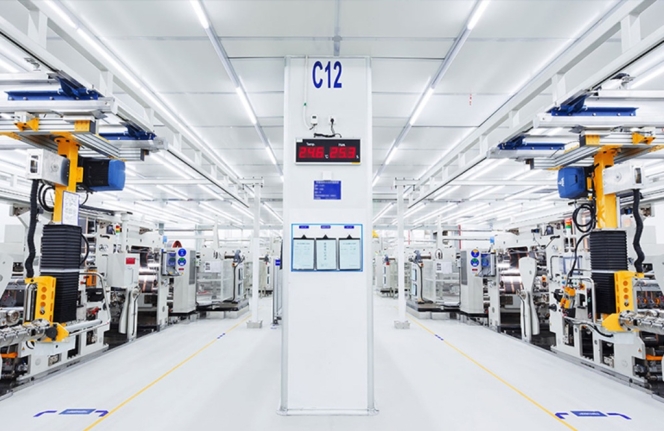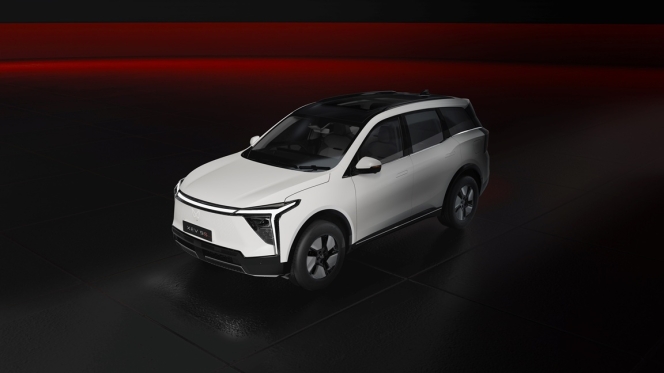
Hyundai Motor Company has unveiled the ‘Inster’, a new sub-compact electric vehicle at the Busan International Mobility Show 2024.
Exterior
Built on the ‘Casper’, a Korea-specific, petrol sub-compact SUV introduced in 2021, the Inster’s design gets an extended body and wheelbase. With the expanded dimensions, the Inster is positioned between traditional A-segment sub-compact city cars and larger B-segment compact models.
The exterior design is characterised by smooth, rounded edges, bulged fenders, a circuit board-style bumper and a skid plate at the front and rear.
The Inster’s gets LED daytime running light signature and pixel-graphic turn signals, tail lamp and bumpers. LED projection headlamps and a two-tone exterior with a blacked-out roof are also offered on some variants. The Inster gets 15-inch steel wheels with wheel covers, 15-inch alloy wheels or 17-inch alloy wheels depending on the variant.
Exterior colour choices include Atlas White, Tomboy Khaki, Bijarim Khaki Matte and Unbleached Ivory, as well as several new paint-jobs, such as Sienna Orange Metallic, Aero Silver Matte, Dusk Blue Matte, Buttercream Yellow Pearl, and Abyss Black Pearl. Some exterior colour choices will be available in two-tone combinations with a contrasting black roof. The paint of the Inster, Hyundai claims, is sustainable featuring black high-gloss recycled paint, which replaces the carbon black pigment traditionally used in black paint with a colouring made from recycled waste tires.
Interior
On the inside, the Inster features a 10.25-inch digital cluster, a 10.25-inch infotainment touchscreen with navigation and a wireless charging dock as a part of the centre console. The pixel theme is repeated inside, also featuring customisable upper door trim garnishes for owners to further personalise the vehicle.
The Inster’s front row seating provides walk-through access and all seats can be folded flat – including the driver’s seat – for increased flexibility. A front bench seat option and heated front seats and steering wheel are also available. The second-row seats are slidable, can recline and also split 50-50.
Interior trim choices include Black, and Khaki Brown and Newtro Beige two-tone with full cloth trim. According to Hyundai, the interior of the Inster also uses sustainable materials like recycled polyethylene terephthalate (PET) from bottles and bio-polypropylene material extracted from sugarcane are used inside.
Hyundai says that the Inster will launch first in Korea this summer, followed by Europe, the Middle East and Asia Pacific in due course. Most equipment and technologies will come fitted as standard with extra convenience and design features available as options. The exact specifications is set to be confirmed closer to the launch. Hyundai has also planned an additional variant in the future called ‘Inster Cross’ featuring a more rugged, outdoor-focused design.
"With Inster, we've taken the small SUV image to a bold new place for the global audience," said Simon Loasby, Senior Vice-President and Head of the Hyundai Design Center. "Inster punches well above its weight with distinctive design and an interior that maximises its potential in exciting, customer-centric ways. With Inster we're redefining what it means to drive a sub-compact EV," added Simon.
Performance and Range
The Inster EV is equipped with a 42 kWh battery as standard, and is also available with a long-range 49 kWh battery as an option. Both models are powered by a single motor that delivers 71.1 kW (97 PS) in the base variant and 84.5 kW (115 PS) in the long-range model. Both versions offer 147 Nm of torque.
With a claimed range of 355km on a single charge for the long-range model, the Inster requires an estimated energy consumption of 15.3 kWh/100 km. (Both figures are for the 15-inch wheels) The standard range model gets a claimed range of more than 300km.
The sub-compact EV can charge from 10 to 80 percent in around 30 minutes under optimal conditions when using a 120 kW DC high-power charging station. It also comes equipped with an 11 kW on-board charger as standard, while a battery heating system and high-efficiency heat pump are available.
External and internal Vehicle-to-Load (V2L) functionality provides power for external devices (110V/220V), allowing bi-directional charging without requiring additional equipment. This enables customers to freely use or charge devices such as electric bicycles, scooters and camping equipment.
Specifications and Features
| Dimensions (mm) | Length: 3,825 Wheelbase: 2,580, Width:1,610 Height: 1,575 |
| Luggage space (VDA) | 280 litres (up to 351 litres with sliding rear seats) |
| Wheel options | 17-inch alloy, 15-inch alloy, 15-inch steel with wheel covers |
| Battery | Standard: 42 kWh / Long-Range: 49 kWh |
| Voltage | Standard: 266 V / Long-Range: 310 V |
| Max power | Standard: 71.1 kW and 97 PS / Long-Range: 84.5 kW and 115 PS |
| Max speed | Standard: 140 km/h / Long-Range: 150 km/h |
| 0-100 km/h | Standard: 11.7 s / Long-Range: 10.6 s |
| Projected consumption | 15.3 kWh/ 100 km (with 15-inch wheels) |
| AC charging time (at OBC power) | Standard: 4 hours (16A) Long-Range: 4 hours 35 minutes (16A) |
| ADAS features | Surround View Monitor (SVM), Parking Collision-Avoidance Assist Rear (PCA-R), Blind-spot View Monitor (BVM), Forward Collision-Avoidance Assist 1.5 (FCA 1.5), Lane Keeping Assist (LKA) and Lane Following Assist (LFA), Blind-Spot Collision-Avoidance Assist (BCA), Rear Cross-Traffic Collision-Avoidance Assist (RCCA), Safe Exit Warning (SEW), Smart Cruise Control (SCC)w/ Stop and Go, Highway Driving Assist 1.5 (HDA 1.5), Intelligent Speed Limit Assist (ISLA), Driver Attention Warning (DAW), High Beam Assist (HBA), Leading Vehicle Departure Alert (LVDA) and Rear Occupant Alert (ROA), Parking Distance Warning (PDW) Front and Rear, Rear View Monitor (RVM). |
*Specifications are based on European-model Hyundai Inster. Features, technology and claimed figures may differ depending on the market.
Trinseo Launches Fourth-Generation Binder For The Next Wave Of EV Batteries
- By MT Bureau
- December 03, 2025

Trinseo has introduced its latest innovation, the Fourth-Generation SBR Binder Platform, designed to meet the evolving demands of electric vehicles and battery energy storage systems. This development reflects the company's strategic focus on delivering high-performance materials essential for the global shift towards sustainable energy.
The platform results from advanced polymer science and collaboration with battery manufacturers, targeting key industry requirements such as increased energy density, superior durability and more efficient production. It provides a significant improvement in peel strength, enabling stronger electrode bonds, thicker coatings and higher manufacturing speeds. These attributes are vital for developing higher-capacity batteries that can extend driving range and improve storage solutions.
The inaugural product, VOLTABOND 109 Latex Binder, offers this next-generation performance with broad compatibility across various anode materials and manufacturing processes. Its design ensures excellent stability and low resistance, supporting faster charging and long-term reliability. To ensure robust supply, Trinseo will produce the platform locally within major global regions, enhancing responsiveness to battery production hubs.
Rooted in decades of expertise, this new platform establishes a foundation for future innovations tailored to diverse customer needs across the battery value chain.
CATL And Stellantis Begin Work On EUR 4.1 Billion Spanish Battery Plant
- By MT Bureau
- November 28, 2025

CATL and Stellantis broke ground on a EUR 4.1 billion battery plant in Figueruelas, Spain, on 26 November. The 50:50 joint venture will produce lithium-iron-phosphate battery cells and targets an annual production capacity of 50 GW/h.
The project, which is Spain’s largest battery factory, is backed by over EUR 300 million in EU funds, with production expected to start in late 2026.
According to unions, around 2,000 Chinese workers will help construct the site, a point of contention with local authorities and residents. Also, 3,000 Spanish staff are to be hired and trained later.
Spanish authorities and residents have voiced concerns about job opportunities for local workers and potential strain from the influx of foreign employees. CATL Vice President Meng Xiangfeng said earlier in November the company needed experienced technicians to build and fine-tune production lines, with plans to train local workers to take over operations gradually.
David Romeral, Director General of CAAR Aragon, a network of automotive businesses in the region, said: “We don’t know this technology, these components – we’ve never made them before. They’re years ahead of us. All we can do is watch and learn.”
The regional government is organising work permits for arriving workers while seeking to attract battery supply chain companies to Aragon. Some Chinese technicians and managers have already arrived, with several hundred more expected by year-end and nearly 2,000 by the end of next year.
CATL’s approach contrasts with its Hungarian site in Debrecen, where it hired mostly locals to build its European plant. However, a lack of local workers caused production to be delayed from late 2025 into mid-2026. The Figueruelas facility will serve as CATL’s third European manufacturing operation, alongside the Hungarian plant and one in Germany.
- Neuron Energy
- Equanimity Ventures
- Rajiv Dadlani Group
- Thackersay Family Office
- Chona Family Office
- Pratik Kamdar
- Rajesh Sehgal
- Rajiv Dadlani
Neuron Energy Secures INR 310 Million To Expand EV Battery Manufacturing For Four-Wheelers & Buses
- By MT Bureau
- November 27, 2025

Neuron Energy, an EV battery manufacturer, has raised INR 310 million in a Pre-Series B funding round led by Equanimity Ventures, Rajiv Dadlani Group, Thackersay Family Office and Chona Family Office, with participation from Family Offices and HNI investors. With this, Neuron Energy has raised INR 810 million to date.
The funding will be used to expand Neuron Energy’s manufacturing capacity to 3 GWh and to establish a fully automated, large-scale battery facility for electric four-wheelers and buses at Chakan, Pune. The capital will also strengthen the company’s R&D capabilities, accelerate domestic growth, and broaden its footprint in international markets.
Pratik Kamdar, CEO and Co-Founder, Neuron Energy, said, “This Pre-Series B round is a defining step in our mission to industrialise world-class battery manufacturing in India. As EV adoption accelerates, we are focused on building capacity, embedding automation, and pushing the boundaries of performance and reliability. This investment ensures we can deliver at scale, both in India and globally.”
The company said it operates with a low-CapEx and low-OpEx business model. It has been growing profitably year-on-year and is on track to achieve INR 2 billion in revenue this year. The company is also confident of achieving sales of over INR 9 billion, with profitability, over the next few years.
Rajesh Sehgal of Equanimity Ventures, added, "We see immense potential in Neuron Energy’s approach to EV battery innovation and scalability. Their focus on quality, automation, and energy efficiency aligns with the evolving demands of the EV industry in India and beyond. We are proud to support their next phase of growth as they scale into new vehicle categories and manufacturing capacities."
The new facility reinforces the company’s position in two-wheeler EV batteries and signals a strategic entry into heavier vehicle segments. This supports Neuron’s vision to become a comprehensive EV battery solutions provider.
Rajiv Dadlani, from the Family Office of the Rajiv Dadlani Group, said, "Neuron Energy demonstrates remarkable potential to become the market leader, with their renewed focus, in delivering top-quality products. The company and its founders are highly committed to delivering rigorously tested and safe-to-use Li-Ion smart batteries. We are confident that they will continue to thrive and set new standards in the industry."
Mahindra Intros XEV 9S Electric 7-Seater SUV At INR 1.99 Million, Deliveries From 23 January
- By MT Bureau
- November 27, 2025

Mahindra has launched the XEV 9S, an electric 7-seater SUV built on the INGLO platform, with prices starting at INR 1.99 million (ex-showroom). The XEV 9S is powered by MAIA, described as India’s fastest automotive mind.
The EV comes with a 70 kWh battery, delivering a power of 180 kW and 380 Nm of torque. It offers a claimed real-world range of 500 km from its LFP battery, which comes with a Lifetime Warranty. The SUV is stated to be the fastest 7-seater in its class, reaching zero to 100 kmph in 7.0 seconds, with a 202 kmph top speed.
The fully-loaded Pack Three Above 79 kWh variant is priced at INR 2.94 million ex-showroom with bookings open on 14 January 2026 and deliveries starting on 23 January 2026.
R Velusamy, President - Automotive Business, Mahindra & Mahindra and Managing Director, Mahindra Electric Automobile, said, “We have always believed that technology is meaningful only when it expands human possibility. The XEV 9S built on the INGLO electric origin platform does exactly that by creatin space – more than anyone else and gives a smooth and noise free ride. THE MAIA brain enables many of its high-tech features, making it the most advanced offering for its price.”
Nalinikanth Gollagunta, Chief Executive Officer - Automotive Division, Mahindra & Mahindra and Executive Director, Mahindra Electric Automobile, said, “The future of Indian mobility will belong to brands that don’t just electrify vehicles, but reimagine categories. With the XEV 9S, we’re not just playing in the EV segment, we’re expanding it. This SUV signals the start of a BIG new electric era for Mahindra - one built on scale, on purpose, and on a deep understanding of how India moves. The attractive prices starting at ₹ 19.95 Lakh make a very high-tech product accessible, with bookings opening on Jan 14 and deliveries start on Jan 23.”
The XEV 9S is an expression of Mahindra’s Heartcore Design philosophy, featuring a stance, lines, a gloss finish and interiors. The vehicle is designed to be silent on wheels.
Key highlights include:
- Space: Offers 4,076-litre of cabin space (for front and second row), boot space up to 527-litre and 150-litre of Frunk space. The third-row features 50:50 split seats.
- Suspension: Features Intelligent Adaptive dampers with i-Link at the front and 5-Link independent suspension at the rear.
- Driver Aids: Includes L2+ ADAS with five Radars and one Vision Camera, Driver Drowsiness Detection with DOMS (Eyedentity) and Secure360 Pro for live view and recording.
- Interior Comfort: Features Powered Boss Mode, ventilated second row seats, recline and sliding adjustment, sunshade for second row windows, Acoustic ‘Laminated’ Glass and wireless phone charging.
- Technology: Equipped with Brake by Wire with IEB, High Power Steering with VGR, VisionX – AR HUD, AutoPark Assist, and 140 features including Digital Key, NFC and Charge Scheduler.
- Entertainment: Includes a 16-Speaker Harman Kardon Audio system with Dolby Atmos, three 31.24 cm screens, 5G Connectivity and Fun & Work Apps.
- Efficiency: Running costs are INR 1.2 per km, with maintenance costs of INR 40 paise per kilometre and negligible road tax. Business owners benefit from 40 percent depreciation.
Pratap Bose, Chief Design & Creative Officer - Auto & Farm Sectors, Mahindra & Mahindra, said, “Designing the XEV 9S wasn’t about adding lines to a surface, it was about shaping a feeling. We wanted it to feel like stepping into a personal sanctuary, yet one that carries the pulse of modern India. Electric gave us the canvas; INGLO gave us the freedom to sculpt light, space and comfort. The result is an SUV that wears its size with grace and its technology with humility. It’s expressive, it’s calm, and it’s unmistakably Mahindra - built for a nation whose aspirations are only getting bigger.”






Comments (0)
ADD COMMENT